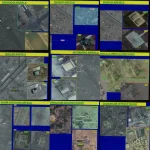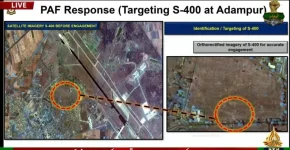- Views: 252
- Replies: 1
A specialized aircraft from the United States Department of Energy (DoE) was reportedly dispatched to a sensitive nuclear storage area in Pakistan on May 10, 2025.
This deployment occurred shortly after India conducted a series of targeted strikes on several Pakistani military and nuclear installations on May 9, 2025.
The American aircraft, a Beechcraft B350 registered as N111SZ (hex code A03192), is understood to be operated by the DoE's National Nuclear Security Administration (NNSA), which is frequently tasked with responding to nuclear and radiological incidents and supporting nuclear non-proliferation efforts globally. Its mission in Pakistan is believed to be linked to assessing the security and integrity of nuclear materials following the Indian military action.
India's operation reportedly targeted key locations including Nur Khan, Sargodha, Jacobabad, and Bholari airbases, as well as the Kirana Hills. The Kirana Hills site, near Sargodha, has long been suspected by international observers of being a storage location for nuclear assets. The stated aim of the Indian strikes was in retaliation to Pakistan's failed swarm drones and missile attack on Indian military and civilians.
Flight tracking information, corroborated by services like Flightradar24, indicated the DoE aircraft was operating within the Lahore Flight Information Region. On May 11, 2025, around 08:39 Coordinated Universal Time (UTC), the plane was identified near Islamabad and Rawalpindi, flying at a ground speed of approximately 150 knots (278 kilometers per hour). Its transponder emitted squawk code 2063, and its unique ICAO 24-bit address confirmed its identity as the DoE asset. Such aircraft are typically equipped for roles including aerial surveys and the transport of specialized personnel or equipment.
Military analysts suggest that the Indian strikes were a calculated move designed to undermine Pakistan's nuclear deterrence strategy amidst a period of heightened geopolitical strain. The subsequent swift arrival of the U.S. Department of Energy team highlights significant international apprehension regarding the stability and security of Pakistan's nuclear arsenal after the attacks. The DoE and its NNSA play a critical role in America's global efforts to prevent nuclear proliferation and secure vulnerable nuclear materials.
The U.S. involvement has drawn mixed reactions from regional observers. Some commentators argue that the American intervention may have prematurely concluded India's actions, which they speculate could have been aimed at more comprehensively neutralizing the perceived nuclear threat from Pakistan. These experts suggest that a different outcome might have altered the strategic power balance in South Asia, potentially diminishing long-term risks of nuclear conflict.
However, the rapid deployment of the U.S. DoE aircraft also underscores Washington's established policy of prioritizing the safeguarding of nuclear materials worldwide. This approach aims to prevent such materials from falling into unauthorised hands, particularly in regions experiencing acute instability and facing the risk of further escalation. The primary American concern in such situations is often focused on nuclear security and the prevention of proliferation above other geopolitical considerations.


